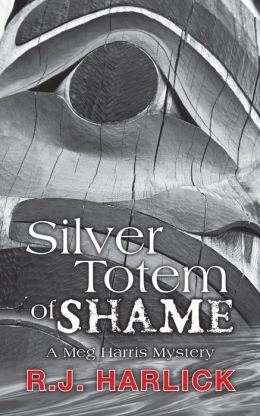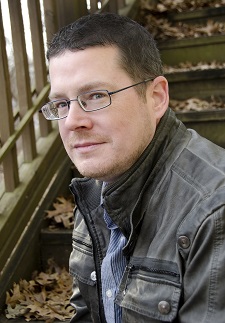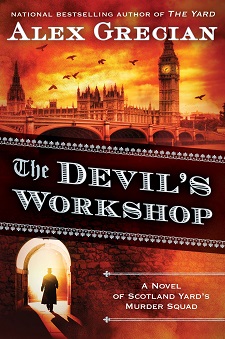
Most astute readers will recognize the majority of authors and their books listed in the Anthony nominations, which were announced. But it is always interesting to note how many of the authors also have won this year’s Edgar and Agatha awards.
Among the Anthony Award nominees are William Kent Krueger whose Ordinary Grace took this year’s Edgar for best novel and Alex Marwood’s The Wicked Girls, which won the Edgar for best paperback original.
The authors who had been nominated for an Edgar in best first novel who also are up for an Anthony in the same category are Roger Hobbs (Ghostman); Becky Masterman (Rage Against the Dying); and Kimberly McCreight, (Reconstructing Amelia).
Stephen King’s Joyland landed a nomination for an Edgar and an Anthony in the best paperback original.
While Robert Crais’ Suspect was not an Edgar finalist, he was one of this year’s Grand Masters, an honor that comes from the Mystery Writers of America. He shared that honor with Carolyn Hart.
John Connolly’s short story, “The Caxton Private Lending Library & Book Depository,” won an Edgar and is now up for an Anthony.
Daniel Stashower took home an Edgar and an Agatha in the best fact crime category for The Hour of Peril: The Secret Plot to Murder Lincoln Before the Civil War and is up for an Anthony in the same category.
Hank Phillippi Ryan won this year’s Agatha for best novel for The Wrong Girl; Julia Spencer-Fleming’s Through the Evil Days had been nominated for that same category.
Chris Grabenstein won an Agatha for his children’s book, Escape from Mr. Lemoncello’s Library. As he was for an Agatha, he is again up against Joelle Charbonneau, The Testing, and Penny Warner, The Code Busters Club: Mystery of the Pirate’s Treasure, for an Anthony.
Art Taylor’s short story, “The Care and Feeding of Houseplants,” took home an Agatha and is now nominated for an Anthony.
This year’s Anthony Awards include eight categories of novels, television, audio books and short stories.
Bouchercon 2014—nicknamed “Murder on the Beach”—will present the the Anthony Awards during the 45th annual Bouchercon World Mystery Convention to be held in Long Beach, Calif.
Bouchercon, a do-not-miss conference, will be Nov. 13 to 16 and is expected to be one of the largest Bouchercons. This year’s guests of honor are J.A. Jance and Edward Marston with Eoin Colfer as the YA guest of honor and Jeffery Deaver taking the Lifetime Achievement Award. Toastmaster is Simon Wood.
The Anthony Awards will be voted on during the convention and presented on Nov. 15. The Anthony Award nominees have been selected by vote of the Bouchercon membership.
Here are the nominees for 2013 publications.
Congratulations to all the nominees:
Best Novel
Robert Crais, Suspect
Sara J. Henry, A Cold and Lonely Place
William Kent Krueger, Ordinary Grace
Hank Phillippi Ryan, The Wrong Girl
Julia Spencer-Fleming, Through the Evil Days
Best First Novel
Matt Coyle, Yesterday’s Echo
Roger Hobbs, Ghostman
Becky Masterman, Rage Against the Dying
Kimberly McCreight, Reconstructing Amelia
Todd Robinson, The Hard Bounce
Best Paperback Original Novel
Chris F. Holm, The Big Reap
Darrell James, Purgatory Key
Stephen King, Joyland
Alex Marwood, The Wicked Girls
Catriona McPherson, As She Left It
Best Short Story
Craig Faustus Buck, “Dead Ends”
John Connolly, “The Caxton Private Lending Library & Book Depository”
Deni Dietz, “Annie and the Grateful Dead”
Travis Richardson, “Incident on the 405”
Art Taylor, “The Care and Feeding of Houseplants”
Best Critical or Non-Fiction Work
Maria Konnikova, Mastermind: How To Think Like Sherlock Holmes
Cate Lineberry, The Secret Rescue: An Untold Story of American Nurses and Medics Behind Nazi Lines
Josh Stallings, All the Wild Children
Daniel Stashower, The Hour of Peril: The Secret Plot to Murder Lincoln Before the Civil War
Sarah Weinman (ed.), Troubled Daughters, Twisted Wives
Best Children’s or Young Adult Novel
Joelle Charbonneau, The Testing
Margaux Froley, Escape Theory
Chris Grabenstein, Escape from Mr. Lemoncello’s Library
Elizabeth Keim, Dancer, Daughter, Traitor, Spy
Penny Warner, The Code Busters Club: Mystery of the Pirate’s Treasure
Best Television Episode Teleplay First Aired in 2013
Jon Bokenkamp, The Blacklist, Pilot
Allan Cubitt, The Fall, “Dark Descent”
Vince Gilligan, Breaking Bad, “Felina”
Kevin Williamson, The Following, Pilot
Graham Yost, Justified, “Hole in the Wall”
Best Audio Book
Christina Cox, reading Crescendo by Deborah J Ledford
Robert Glenister, reading The Cuckoo’s Calling by Robert Galbraith
Mauro Hantman, reading Man in the Empty Suit by Sean Ferrell
Davina Porter, reading Death and the Lit Chick by G.M. Malliet
Tracy Sallows, reading Hour of the Rat by Lisa Brackmann

 When a gifted young totem pole carver is murdered in Vancouver, British Columbia, Meg Harris and her new husband Eric, an Algonquin Indian, find themselves thrust into a crime that has its roots in a centuries-old dispute between the encroaching Europeans and the local Haida tribe.
When a gifted young totem pole carver is murdered in Vancouver, British Columbia, Meg Harris and her new husband Eric, an Algonquin Indian, find themselves thrust into a crime that has its roots in a centuries-old dispute between the encroaching Europeans and the local Haida tribe.



